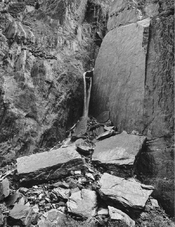Doremus Scudder
Member
I make proper proofs of all my negatives (except those that are never, ever going to be printed because of damage, not closing the preview, etc.). All my negs are 4x5 these days, so proofs are big enough to view easily without magnification.
Proper proofs (min exposure time to max black for the film rebate) help me keep an eye on my exposure and development as well as other process variables. I also use the proofs for deciding which negative to actually print and the cropping (I use a pair of cropping Ls).
Proofs are filed in binders along with the negatives and the exposure information sheets. When looking for a negative from years ago, the proofs help a lot as well.
Best,
Doremus
Proper proofs (min exposure time to max black for the film rebate) help me keep an eye on my exposure and development as well as other process variables. I also use the proofs for deciding which negative to actually print and the cropping (I use a pair of cropping Ls).
Proofs are filed in binders along with the negatives and the exposure information sheets. When looking for a negative from years ago, the proofs help a lot as well.
Best,
Doremus






 . Honestly, it's such a pleasure just to be in a darkroom for 5 or 6 hours straight that the sense that time might be wasted does not factor in.
. Honestly, it's such a pleasure just to be in a darkroom for 5 or 6 hours straight that the sense that time might be wasted does not factor in.